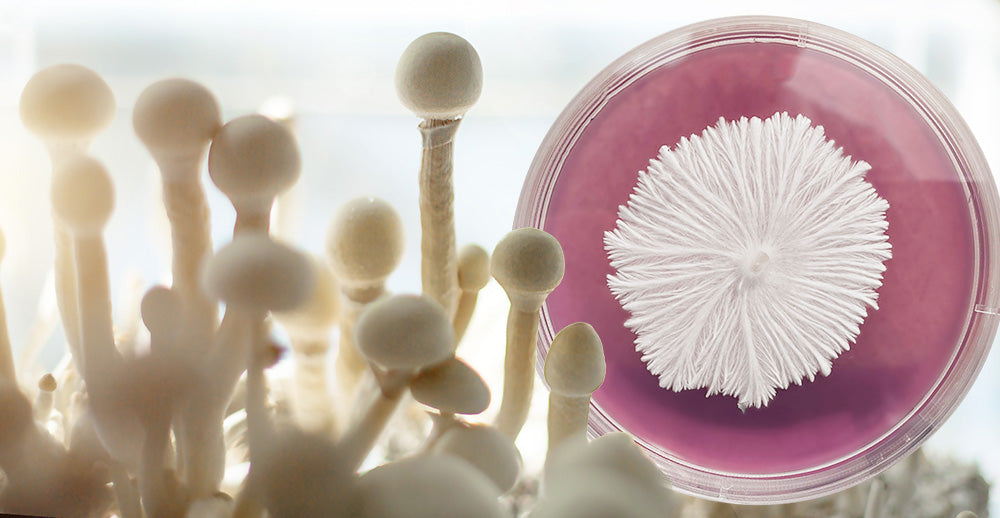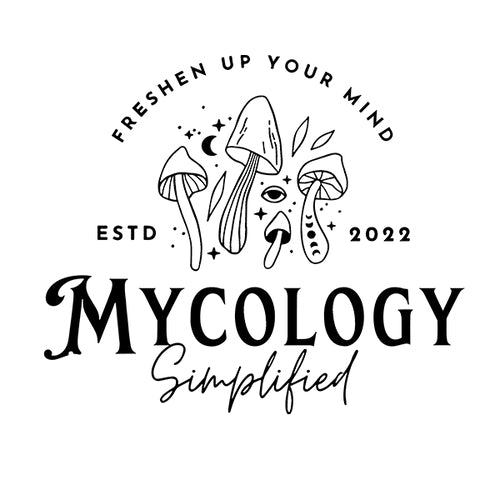
Boosting Your Mushroom Growth: The Benefits of Agar Cultivation
Compartir
Introduction to Agar
Agar cultivation is a game-changer in the world of mushroom growing. Think of agar as a jelly-like substance that provides a perfect environment for mushroom spores to kick off their life cycle. It’s like giving the mushrooms a head start by offering them a cozy and controlled setting to develop strong and healthy before moving them to their final growing medium. This approach has several benefits. First, it significantly speeds up the mushroom growth process, as the nutrients in agar allow for rapid spore germination and development. Second, using agar makes it easier to spot and isolate contaminants early, ensuring your mushrooms grow in a clean environment. Lastly, it gives you the power to replicate successful mushroom cultures efficiently, reducing variability in your harvests and improving yields. If you’re serious about mushroom cultivation, starting with agar is a smart move.
What is Agar and How Does it Work?
Agar is a gel-like substance that comes from seaweed. It’s a key player in mushroom cultivation for many good reasons. First off, it’s excellent at holding moisture, which mushrooms absolutely love. Plus, Agar provides a surface where the mushroom spores can latch onto and start their growth journey without any interruption from competitors like bacteria or molds. When you mix mushroom spores with Agar under sterile conditions, you create a perfect environment for them to thrive and multiply before they’re moved to a bigger, more natural habitat for full-scale growth. Simple yet effective, Agar is a cornerstone in the world of mushroom cultivation.
Key Benefits of Using Agar in Mushroom Cultivation
Using agar in mushroom cultivation might sound technical, but it’s a game-changer. Think of agar as a launching pad for your mushrooms. It provides a sterile environment, which is crucial because you don’t want harmful bacteria or mold partying with your mushrooms. This means your mushrooms can grow without fighting off invaders. Here’s the kicker: agar lets you identify the strongest mushroom cultures. This is like picking the best athletes for your team, ensuring you’re always cultivating the champions. Plus, agar use speeds up the growth process. Your mushrooms get to the finish line faster, which is ideal if you’re impatient or running a business. Lastly, and this is a big one, it reduces contamination risk significantly. Less contamination equals less waste, and less waste means more mushrooms to enjoy or sell. So, boiling it down, agar in mushroom cultivation means healthier, faster-growing mushrooms, and it streamlines the whole process by cutting down the risk of contamination. It’s a straightforward choice for mushroom cultivators aiming for the top.
Agar Cultivation vs. Other Growing Methods
When weighing the options for growing mushrooms, agar cultivation stands out for a few good reasons compared to traditional soil or grain-based methods. First off, agar, a gelatinous substance derived from seaweed, provides a more sterile environment for your mushrooms. This drastically reduces the risk of contamination, a common headache with soil or grain mediums. When you’re dealing with other methods, you’re also battling potential pests and pathogens that love those environments. With agar, you’ve got a clean slate.
Agar’s transparency is another upper hand. It allows growers to easily spot any contaminants or problems early on, saving a lot of time and effort in managing the growth process. This clear view isn’t something you get with opaque soil or grains. Plus, transferring healthy mycelium from agar to your final growing medium is straightforward, ensuring a healthy start for your mushrooms.
While agar might seem a bit technical at first glance, it’s actually a direct path towards more efficient, controlled mushroom cultivation. It might take a bit to get the hang of it, but the payoff in reduced contamination and easier management is worth it. Remember, though, that agar cultivation does require some specific supplies and a bit of a learning curve. But for those serious about getting the most out of their mushroom crop, these are small hurdles on the way to bigger, healthier yields.
Setting Up Your First Agar Cultures

Starting your agar cultures is simpler than you think. First, you need a few key supplies: agar powder, petri dishes, a pressure cooker, and some basic lab equipment like a scalpel and inoculation loop. The process is straightforward. Mix the agar powder with water, following the instructions on the package. Sterilize the mix in the pressure cooker to kill any unwanted bacteria or fungi. Once it’s cool, pour it into the petri dishes. The next step? Introduce mushroom spores or a piece of mushroom tissue to the agar. Use the scalpel for tissue or the inoculation loop for spores. Seal the dishes with parafilm or similar material to keep contaminants out. Now, you wait. Keep the dishes in a space with indirect light and at a stable temperature. In a week or two, you’ll see the magic happen – the growth of mycelium, the foundation of your mushroom cultivation. Remember, the key to success with agar cultures is cleanliness. Always work in a clean area and sterilize your tools before use. This simple start can lead to a rewarding mushroom growing journey.
Step-by-Step Guide to Preparing and Inoculating Agar Plates
First, grab your agar and petri dishes; you’re about to become a mushroom growing pro. Making your agar plates is like prep work for a big meal—it’s essential. Start by mixing agar with water and some nutrients; think of it as cooking a special broth for your mushrooms. You boil this mix and pour it into sterile petri dishes. This step must be as clean as possible. Think of yourself as a chef in a high-class restaurant where cleanliness is key.
Now, let’s inoculate. This is where the magic starts. Take a tiny piece from a mushroom you want more of and place it on the agar plate. It’s like planting a seed in a garden. Seal the dish to keep nasties out, and wait. You’re setting up a mushroom base camp from where they’ll conquer the rest of their growing space.
Remember, patience is your friend. In a few weeks, you’ll see your mushroom mycelium, basically the roots of your mushrooms, taking over the agar. That’s your green light to move to the next step of your growing adventure.
This straightforward approach avoids complex jargon, aiming to demystify the process of preparing and inoculating agar plates for mushroom cultivation.
Tips for Maintaining Healthy Agar Cultures
When growing mushrooms, agar cultures are your best bet for robust results. They are the foundation of mushroom cultivation, helping identify contamination and select for characteristics like higher yields or faster growth. Here’s the straightforward way to keep your agar cultures in top shape. Always start with sterilized equipment. Sounds obvious, but it’s the most crucial part. Any tool you use - petri dishes, agar, or scalpel - must be sterile to avoid introducing mold or bacteria that can mess with your cultures. Label everything. You think you’ll remember which strain is which, but you won’t. Use a marker to write on the petri dish - strain name, date, and any other vital info. Keep them in the right environment. Your cultures love a dark and cool place, think room temperature or slightly cooler, but not freezing. This keeps them away from unwanted growths that come with warmth and light. Check on them regularly, but don’t be a helicopter parent. Opening the dishes too often can introduce contaminants. Look for any signs of contamination - weird colors, fuzzy spots that aren’t supposed to be there. If it looks off, it probably is. Ditch the contaminated ones immediately. This isn’t a grieving process; it’s survival of the fittest. Lastly, patience is your best friend in the world of agar cultures. Sometimes they take their sweet time to show results but trust the process. Keep these points in check, and you’re setting yourself up for some top-tier mushroom cultivation.
Troubleshooting Common Agar Cultivation Problems
When diving into agar cultivation to boost your mushroom growth, you might hit a few snags along the way. But don’t worry, it’s all part of the process. First off, contamination is a common hurdle. You might see strange colors or spots on your agar. This usually means unwanted bacteria or molds have crashed your party. Keeping everything super clean and sterilizing your tools can help keep those party crashers away. Another issue could be slow or no growth. If your mushrooms are taking their sweet time, consider the moisture level. Too dry or too wet can slow things down. Aim for a just-right Goldilocks scenario. And temperature plays a big role too. Each mushroom species likes its own cozy temp range, so make sure you’ve got that dialed in. Lastly, weak growth could be a sign your mushroom culture is exhausted. They get tired too! Sometimes they need a fresh start on new agar to get back to their sprightly selves. In short, keep it clean, watch your environment, and refresh your cultures when needed. With a bit of troubleshooting, you’ll be on your way to bountiful mushroom growth.
How to Scale Up Your Agar Cultivation
Scaling up your agar cultivation is straightforward if you stick to the basics. First, you need more space. Think bigger petri dishes or more of them. The idea is to increase the surface area for your cultures to grow. Next, keep contamination in check. Any unwanted guests can ruin your growth efforts, so work in a clean space and use sterilized tools. Consider upgrading your sterilization techniques if you’re getting serious. Autoclaving your media and tools can be a game-changer. Also, don’t overlook the importance of proper nutrition. Your mushrooms are what they eat. Experiment with different agar recipes to find the perfect mix that boosts growth. Some recipes may include nutrients that specifically encourage faster or healthier mushroom development. Finally, clone the best performers. Not all mycelium is created equal. If you find a particularly vigorous strain, use tissue cultures to propagate it. This ensures that your efforts to scale up won’t be in vain, focusing on the winners. Keep it simple, stay clean, feed well, and pick the champions. That’s how you scale up your agar cultivation.
Conclusion: Maximizing Mushroom Growth with Agar
Agar cultivation is a game-changer for mushroom growers. By using agar, you unlock a world of benefits that lead to healthier and more abundant mushroom harvests. You control contaminants better and ensure only the strongest mycelium leads your grow efforts. Remember, the upfront investment in agar might seem a bit more, but the payoff in quality and quantity of mushrooms is well worth it. Whether you’re a hobbyist or aiming for large-scale production, incorporating agar into your growth strategy pushes your mushroom cultivation to the next level. So, embrace agar, optimize your growth conditions, and watch as your mushroom yields soar.
Suggested Products for Agar Success:

